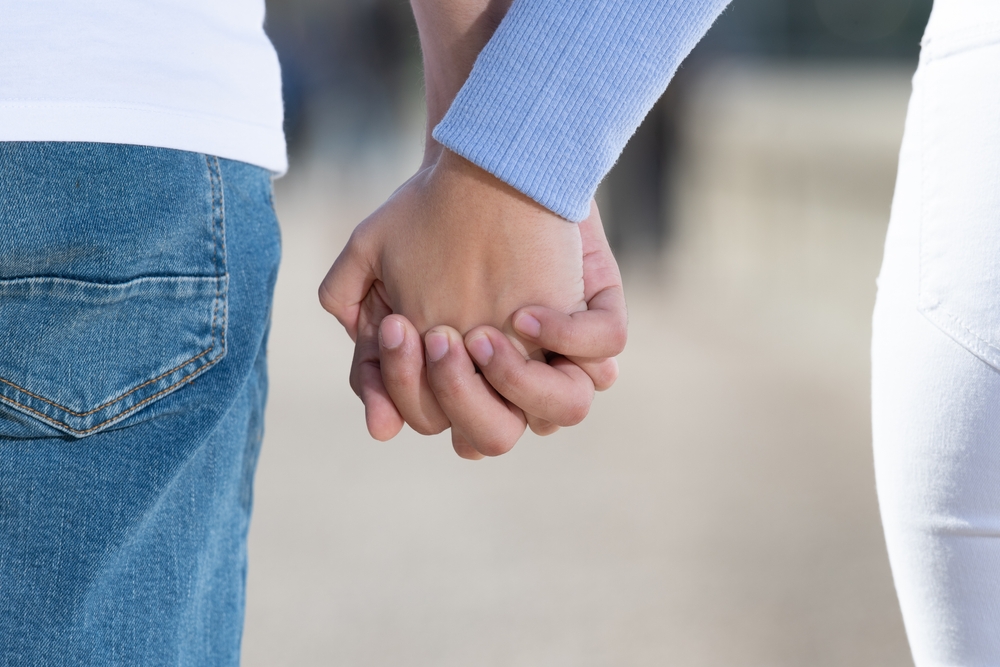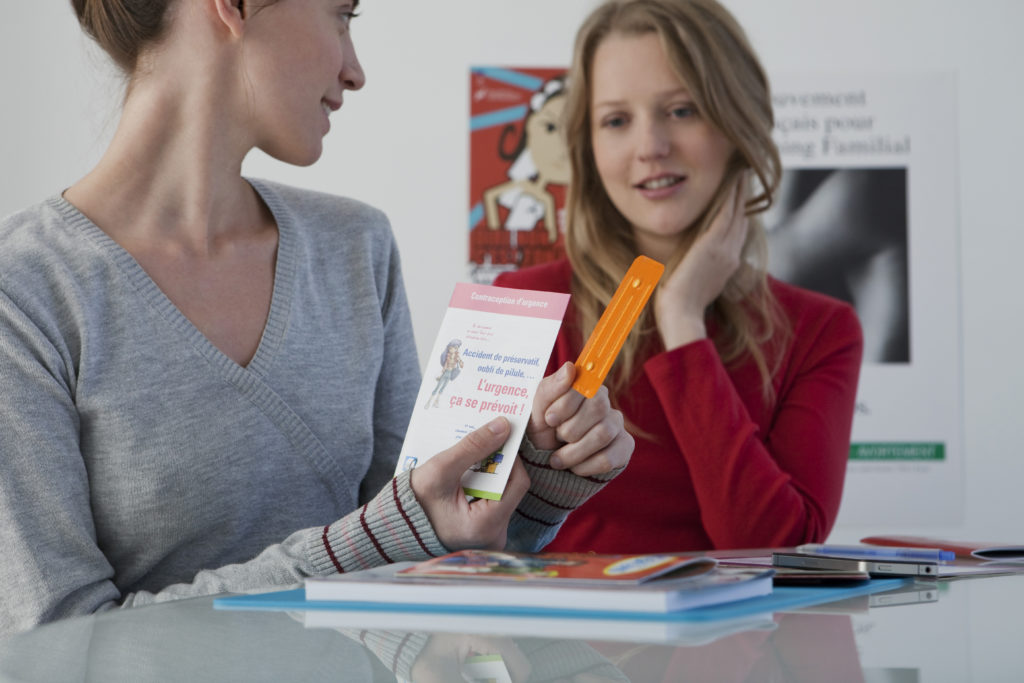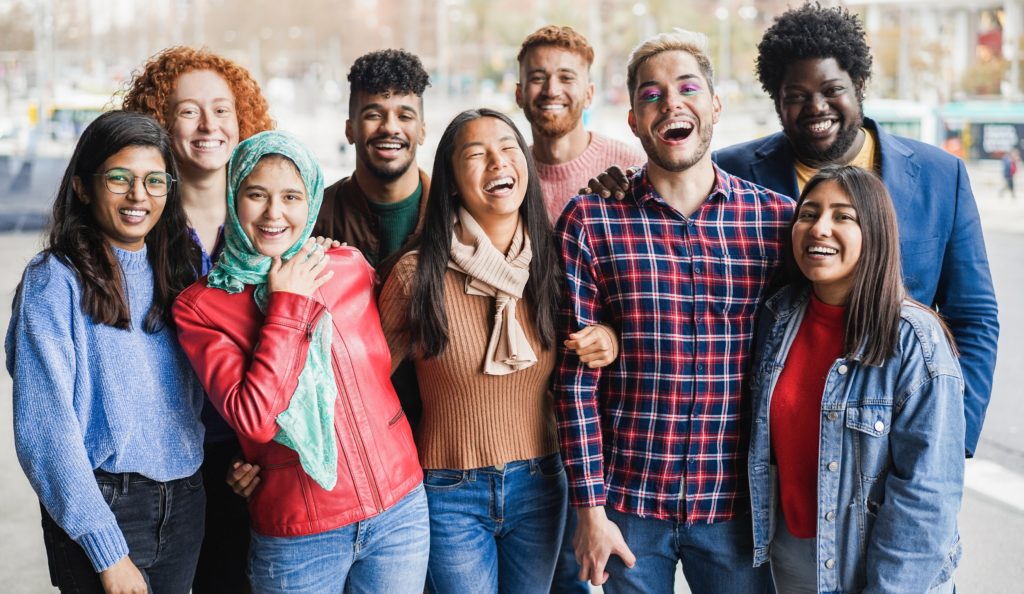Exploring and expressing one’s sexuality is a natural part of human development, especially during adolescence. This crucial phase involves physical, hormonal, and psychological changes, shaping individuals as they transition from childhood to adulthood. However, defining adolescence is complex, influenced by cultural expectations and legislative variations worldwide.

How to define adolescence
Adolescence is a critical stage in the human developmental process. It is a period of transition during which an individual undergoes physical, hormonal, and psychological changes (Hegde A. et al., 2022). The concept of adolescence is not easily defined, as individual children reach maturity at different ages.
Moreover, the process of transitioning from childhood to adulthood is influenced by context and environment, as reflected in the wide variation in cultural expectations of adolescents in national legislations, which afford different thresholds for entry into adult activities, and across international bodies, which employ a variety of age ranges to define adolescence. In a broad sense, adolescence can be generally understood as the period in one’s life ranging from ten to eighteen (General Comment No. 20, 2016).
Statistics on adolescent sexual behaviours
In 2002, the World Health Organization (WHO) examined sexual trends among fifteen-year-old students from thirty-five countries. While the study revealed that there is a higher percentage of boys who engage in sexual intercourse as compared to girls, emerging trends indicated that as many or more girls were active when they turned fifteen.
However, while this changing trend was registered, the age at which most boys first had intercourse remained younger than that of girls, showing that gender can influence adolescent sexuality. The study also indicated that the median age of first intercourse in most countries was sixteen to nineteen years for girls, and seventeen to nineteen years for boys (Long, M, 2023).
Development of sexuality in adolescents
The development of sexuality starts as early as in the womb and continues throughout one’s life. Adolescence plays a vital role in determining one’s sexuality as it brings profound alteration to hormonal, anatomic, and neuropsychological substrates of sexuality and the interpersonal, familial, and social significance of these changes. Parenting styles and attitudes toward sexuality, family environment, peer relationships, and the influence of culture and community are the social substrates that influence the development of an individual’s sexuality (Hegde A. et al., 2022).
The development of adolescent sexuality consists of four domains of the sexual response cycle-sexual desire, sexual arousal, sexual behaviours, and sexual functioning. Sexual behaviours include abstinence, masturbation, and partnered sex (Hegde A. et al., 2022).
Abstinence in adolescence is described as refraining from oral, vaginal, or anal-partnered sexual behaviours (Hegde A. et al., 2022). The practice of abstinence is subject to cultural, social, and religious differences, and its relevance and effectiveness are always in question.
In fact, according to WHO, abstinence-only programmes are ineffective in preventing early sexual activity and risk-taking behaviour, and potentially harmful to young people’s sexual and reproductive health (WHO, 2023). In some developed countries, abstinence is characterized by purity rings and chastity vows aimed at preventing sexual intercourse before marriage, while in some developing countries abstinence is enforced through female genital mutilation and other traditional practices, which are detrimental to the sexual development of adolescents (Long, M., 2023).
Masturbation is the second-most prevalent adolescent sexual behaviour. Though it is widely subjected to stigma and societal condemnation, the medical field holds it to be developmentally normal behaviour. The age of onset of masturbation is not well defined in the literature, but retrospective studies stipulate it to be thirteen years for men and fifteen years for women. Masturbation is more common among male adolescents as compared to females and it persists across the lifespan (Hegde A. et al., 2022).
Partnered sexual behaviour includes kissing, touching erotogenic body parts, partner-assisted masturbation, cunnilingus, fellatio, penile-vaginal intercourse, and penile-anal intercourse. Another contemporary behaviour that is included in this repertoire is sexual exchange via electronic media, generally known as phone sex or sexting. Partnered, noncoital sexual behaviours comprise the majority of the adolescents’ sexual experience (Hegde A. et al., 2022).
Gender differences
Larsson stated that “what we term healthy and natural sexuality is formed from the society that we live in and depends on our gender.” As this quote indicates, children learn about sexuality through a gendered lens (Hegde A. et al., 2022). Gender differences have been seen in the emotions linked with sexual engagement.
Boys reported feeling more proud after sex, while females said they felt “dirty” and ashamed. The sexual double standard in the perception of virginity is also highlighted, with women viewing their virginity as a gift to give to a cherished spouse, while more males saw it as a stigma and a lack of sexual opportunities (Hegde A. et al., 2022).
Minimum age of consent to sex
The “age of consent” is the minimum age at which a person is considered legally competent to consent to sexual acts. As a result, if a person over the age of consent engages in sexual activity with an underaged partner, this activity may be considered statutory rape. In fact, in some jurisdictions, a sexual act can be considered statutory rape even if all participants were underaged (World population review, 2023).
Age of consent laws vary considerably worldwide. Most countries require young people to be at least fourteen before having sex. There are however, exceptions such as Angola and the Philippines where they both set the age of consent at twelve, which is the lowest in the world.
Several other countries, including Niger and Japan, have designated thirteen as the age of consent. Additionally, several countries in Asia and Africa require individuals to be married before they can legally have sex. These include Libya, Afghanistan, and Saudi Arabia, all of which are highly conservative on issues of gender and sexuality (World population review, 2023).
Many countries, states, or territories also have “close-in-age” exemptions, commonly called “Romeo and Juliet” clauses. These laws can remove legal liability when all participants in a sex act are underaged (for example, two sixteen-year-olds). In areas that do not have close-in-age exemptions, it is possible for a person who is under the age of consent to be held liable for engaging in sexual activity with another underaged person (World population review, 2023).
While most European countries set the age of consent between sixteen and seventeen, several others, including Malta and Vatican City, require young people to be at least eighteen before legally having sex.

Europe’s lowest age of consent is fourteen, which applies in countries including Austria, Italy, Serbia, Germany, and Portugal (World population review, 2023). In the United States, the age of consent is decided individually by each state and ranges from sixteen to eighteen. Most countries in South America choose fourteen as the age of consent, including Paraguay, Peru, Brazil, Bolivia, and Ecuador. However, Chile and Argentina have the highest ages of consent in the Americas at eighteen years old (World population review, 2023).
Lesbian, gay, bisexual, transgender and intersex adolescents
Adolescence is a developmental stage during which an individual experiments and discovers about self. There is no definitive way suggested in research whether same-sex interests and activities in adolescence will or will not persist into adulthood. Hence, same-sex sexuality is often discounted as insignificant, transitional, and rather just experimental (Hegde A. et al., 2022).
This group of adolescents experience being humiliated, belittled, bullied, discriminated against, and denied access to education and justice. They are also more likely subjected to rape and sexual assault. These experiences have been linked to low self-esteem, depression, suicide, and homelessness. Adolescents who are lesbian, gay, bisexual, transgender or intersex need respect for their freedom of expression, gender identity, and emerging autonomy. They should not be subjected to “treatments” to try to change their sexual orientation (Save the Children, 2022).
Adolescents with disabilities
Adolescents with disabilities are widely denied access to sexual and reproductive health information and services and may be subjected to forced sterilization or contraception, which is in direct violation of their rights and can amount to torture or ill-treatment. Adolescents with disabilities are disproportionately vulnerable to physical and sexual violence, as well as child or forced marriage, and are routinely denied access to justice or redress (General Comment No. 20, 2016).
Adolescents with HIV/AIDS
Adolescents are the only age group in which death due to AIDS is increasing. Adolescents may face challenges in gaining access to antiretroviral treatment and remaining in treatment; the need to gain the consent of guardians to access HIV-related services, disclosure and stigma are some barriers. Adolescent girls are disproportionately affected, representing two-thirds of new infections (General Comment No. 20, 2016).
Adolescents should have access to confidential HIV testing, treatment, and counselling services. They should be attended by trained personnel who fully respect their right to privacy and non-discrimination. Moreover, governments should consider reviewing HIV-specific legislation that criminalizes the unintentional transmission of HIV and the non-disclosure of one’s HIV status (Save the Children, 2022).
The role of parents and peers
Sexuality education equips children and young people with the knowledge, skills, attitudes and values that help them protect their health, develop respectful social and sexual relationships, make responsible choices and understand and protect the rights of others (WHO, 2023).
Parents are the primary source of information for any child to gain knowledge about sexuality. Some of the components of family sexual culture are gender attitudes, words for genitals, exposure to adult nudity, parents’ dating and sexual behaviours, conversation about sex and reproduction in the family, and norms for a dyadic relationship, which influence adolescents’ knowledge of sexuality. The child-parent relationship is an important aspect that affects the adolescent’s attitude toward sexuality.
However, in most conservative societies, the concept of sexuality is not well discussed within the family. Parents hesitate to provide proper sex education to their children for various reasons. It might be due to a lack of education in the parents, parent-child relationship, parental negative attitude toward sexuality, anxiety about the safety of their children, or feelings of awkwardness about discussing sex with their kids (Hegde A. et al., 2022).
Peers influence adolescents’ sexuality and sexual behaviour by providing either conventional or deviant lifestyle models, by providing models for sexual attitudes and behaviours, by serving as sources of information and sources of social approval and disapproval for certain attitudes and behaviours, and by providing sexual and potential partners (Hegde A. et al., 2022).
Sexuality comprehensive education
Children and adolescents have the right to be educated about themselves and the world around them in an age- and developmentally appropriate manner – and they need this learning for their health and well-being. For this reason, the UN’s global guidance indicates starting comprehensive sexuality education (CSE) at the age of five when formal education typically begins.

However, teaching about sexuality does not necessarily mean teaching about sex. For instance, for younger age groups, CSE may help children learn about their bodies and recognize their feelings and emotions, while discussing family life and different types of relationships, decision-making, the basic principles of consent and what to do if violence, bullying or abuse occur. This type of learning establishes the foundation for healthy relationships throughout life (WHO, 2023).
Nevertheless, there are still many opponents among parents and teachers to school-based sexuality education. It is widely believed that discussions about growing up, developing sexual relations and using contraception may increase teenagers’ interest in sex and encourage them to have their first sexual encounter too early. In addition, there are many concerns about the incompatibility of sexuality education with traditional values in some cultural and social contexts (UNESCO, 2018).
At the same time, research data shows that in countries where comprehensive sexuality education is delivered at schools, adolescents do not necessarily become sexually active early on, but they demonstrate a higher level of knowledge about HIV, STIs and contraception. In addition, it has been proven that CSE contributes to the reduction of unwanted pregnancies, STIs and gender-based violence (UNESCO, 2018).
Today, sexuality education takes place in schools, in community settings, or online all over the world, including in Mexico, Spain, Greece, Albania, Bulgaria and other countries where the church has traditionally a high influence over social life and education. Often, sexuality education is a part of a larger life skills-based health education curriculum. Elements of sexuality education can be incorporated into biology or social studies or other subjects, which discuss relationships, values, family life and child raising (UNESCO, 2018).
Media and online content
In today’s era of digitalization and globalization, online platforms provide an important source of sexual behaviour modelling (Hegde A. et al., 2022). Media messages often contain a large amount of sexual content and often depict unhealthy, unrealistic, inaccurate, and incomplete information about sex and sexual health (Scull, T.M. and Malik, C.V., 2023). Although parental restrictions on social media sites like YouTube offer some protection against exposure to sexual content, the vast sources of information in television, movies, and the internet are nearly impossible to filter completely (Nguyen T., 2021).
The public’s consensus is that early sexual media exposure negatively influences youth behaviour and attitudes, but it remains unclear to what extent. So far, evidence has shown that unrealistic portrayals of sex in the media might contribute to risky sexual behaviour and expectations (Nguyen T., 2021).
Adolescents may suffer from internalizing ideal standards from inappropriate body image depiction and overambitious sexual activity demonstration, thus resulting in poor self-esteem and socially unacceptable channels of sexual expression and needs. This can thus contribute to appropriate social and sexual withdrawal in anticipation of perceived preformed and unattainable ideal standards, resulting in a vicious cycle (Hegde A. et al., 2022).
However, sexual media may also offer benefits that are overlooked due to this popular opinion, such as the potential for sexual health education. For instance, entertainment such as television shows has been found to have positive benefits on sexual attitudes in adolescents. For example, teenagers between the ages of twelve and seventeen self-reported in a survey that watching the show “Friends” helped improve their knowledge about condoms and facilitate discussions about condom efficacy with their parents.
Another study found that exposing youth to the negative consequences of sex in media led to more negative moral judgements of unsafe pre-marital sex. This evidence suggests that sexual media can be beneficial to sexual health and development, but only if these depictions are realistic and contain helpful knowledge (Nguyen T., 2021).
Policies and services for adolescent well-being

In its General Comment No. 20, the CRC Committee states that all adolescents “should have access to free, confidential, adolescent-responsive and non-discriminatory sexual and reproductive health services, information and education”. For adolescents, in particular girls, access to reproductive or sexual health services is crucial for their well-being and general health.
Most EU Member States regulate children’s access to sexual and reproductive health services, including contraceptive methods, in the same way as other health services. Thus, the same limitations that children would face when accessing general health services apply to accessing reproductive or sexual health services (FRA, 2018).
Moreover, the Committee urges States to adopt comprehensive gender and sexuality-sensitive sexual and reproductive health policies for adolescents, emphasizing that unequal access by adolescents to such information, commodities and services amounts to discrimination. Lack of access to such services contributes to adolescent girls being the group most at risk of dying or suffering serious or lifelong injuries in pregnancy and childbirth.
All adolescents should have access to free, confidential, adolescent-responsive and non-discriminatory sexual and reproductive health services, information and education, available both online and in person, including on family planning, contraception, including emergency contraception, prevention, care and treatment of sexually transmitted infections, counselling, pre-conception care, maternal health services and menstrual hygiene (General Comment No. 20, 2016).
The Committee urges States to decriminalize abortion to ensure that girls have access to safe abortion and post-abortion services, review legislation to guarantee the best interests of pregnant adolescents and ensure that their views are always heard and respected in abortion-related decisions (General Comment No. 20, 2016).
Age-appropriate, comprehensive and inclusive sexual and reproductive health education, based on scientific evidence and human rights standards and developed with adolescents, should be part of the mandatory school curriculum and reach out-of-school adolescents. Attention should be given to gender equality, sexual diversity, sexual and reproductive health rights, responsible parenthood and sexual behaviour and violence prevention, as well as to preventing early pregnancy and sexually transmitted infections. Information should be available in alternative formats to ensure accessibility to all adolescents, especially adolescents with disabilities (General Comment No. 20, 2016).
Written by Arianna Braga
Internally proofread by Aditi Partha
Last updated on 4 December 2023
References:
FRA (2018). Accessing reproductive or sexual health services. Retrieved from FRA at https://fra.europa.eu/en/publication/2017/mapping-minimum-age-requirements-concerning-rights-child-eu/accessing-reproductive-or-sexual-health-services, accessed on 3 December 2023.
General Comment No. 20 (2016). General comment No. 20 (2016) on the implementation of the rights of the child during adolescence. Retrieved from OHCHR at https://www.ohchr.org/en/documents/general-comments-and-recommendations/general-comment-no-20-2016-implementation-rights, accessed on 3 December 2023.
Hegde A., et al. (2022). Understanding Adolescent Sexuality: A Developmental Perspective. Retrieved from the Journal of Psychosexual Health at https://journals.sagepub.com/doi/10.1177/26318318221107598?icid=int.sj-full-text.similar-articles.4, accessed on 3 December 2023.
IPPF (2021). EXCLAIM! Young people’s guide to “Sexual rights: an IPPF declaration”. Retrieved ro IPPF at https://www.ippf.org/sites/default/files/ippf_exclaim_lores.pdf, accessed 0n 3 December 2023.
Long, M. (2023). Adolescent Sexuality. Retrieved from UN.org at https://www.un.org/en/chronicle/article/adolescent-sexuality, accessed on 3 December 2023.
Nguyen T., (2021). Teenagers and the Media: The Good, the Bad and the Sexy. Retrieved from Sexlab at https://www.sexlab.ca/blog/2021/4/15/teenagers-and-the-media-the-good-the-bad-and-the-sexy, accessed on 3 December 2023.
Scull, T.M. and Malik, C.V. (2023). Role of Entertainment Media in Sexual Socialization. In The International Encyclopedia of Media Literacy (eds R. Hobbs and P. Mihailidis). Retrieved from Wiley Online Library at https://doi.org/10.1002/9781118978238.ieml0214, accessed on 3 December 2023.
UNESCO (2018). Ecosystem of sexuality education: preparing teenagers for adult life. Retrieved from UNESCO at https://iite.unesco.org/highlights/sexuality-education-ecosystem/, accessed on 3 December 2023.
WHO (2023). Comprehensive sexuality education. Retrieved from WHO at https://www.who.int/news-room/questions-and-answers/item/comprehensive-sexuality-education, accessed on 3 December 2023.
World population review (2023). Age of Consent by Country 2023. Retrieved from World population review at https://worldpopulationreview.com/country-rankings/age-of-consent-by-country, accessed 3 December 2023.

